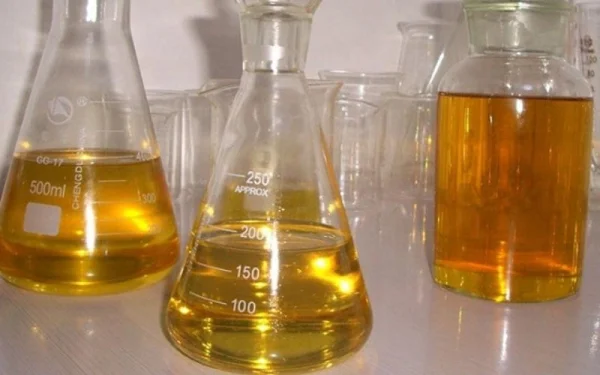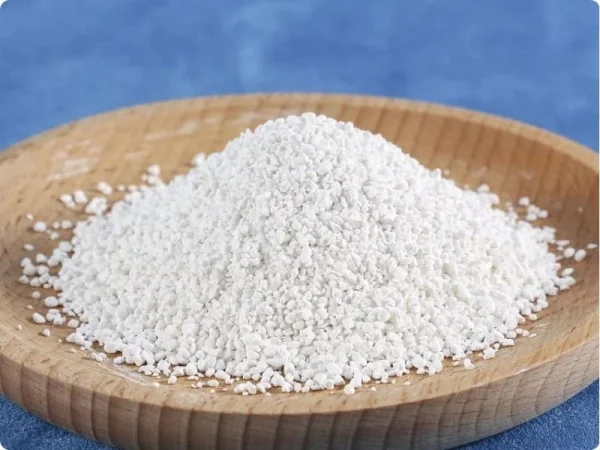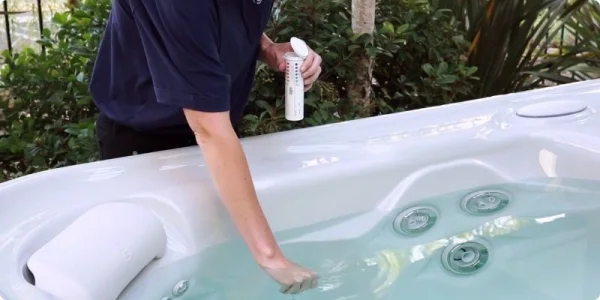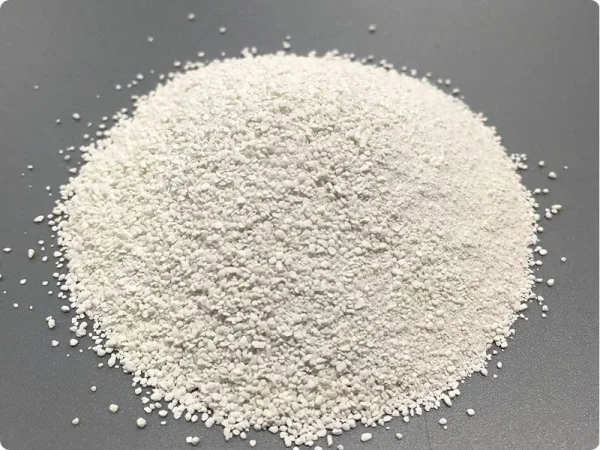
When it comes to maintaining a pool, using the right chemicals is crucial for ensuring the water is clean, safe, and inviting to swim in. Whether you own a residential or commercial pool, understanding the different types of chemicals for pools, their purposes, and proper usage is essential. In this comprehensive guide, we'll explore the various chemicals used for pools, their functions, and how to use them effectively.
Chlorine: The Core Disinfectant for Pool Water
Chlorine is the most widely used chemicals for pools disinfection and sanitization. It comes in various forms, including powder, liquid (sodium hypochlorite or calcium hypochlorite), and tablets (trichloroisocyanuric acid or TCCA). The primary purpose of chlorine is to kill harmful bacteria, viruses, and algae in the pool water, ensuring a safe and hygienic swimming environment.
Powder Chlorine - Ca(OCl)2
Calcium hypochlorite, also known as "Aquafit" or "HTH," is a highly effective and easy-to-use chemicals for pools. It has strong oxidizing and disinfecting properties, making it ideal for sanitizing pool water, eliminating algae, and ensuring water clarity. To use powder chlorine effectively, it's essential to follow the recommended dosage based on pool volume and adjust the pH levels (below 7) before application. Typically, 200-300 grams of powder chlorine per 100 cubic meters of water is recommended for regular maintenance.

Powder Chlorine is ideal for sanitizing pool water
Liquid Chlorine - NaOCl
Liquid chlorine, commonly known as "bleach," is another popular form of chlorine used in pools. It's a highly effective disinfectant and oxidizer, capable of killing bacteria and algae while maintaining water clarity. Liquid chlorine is often used in conjunction with other pool chemicals, such as pH adjusters, to achieve optimal water balance.
Chlorine Tablets - TCCA
Chlorine tablets, or TCCA, are a convenient and long-lasting chemicals for pools maintenance. These tablets slowly dissolve, releasing chlorine into the water over time. TCCA tablets are available in various sizes (e.g., 20 grams or 200 grams) and can be used in automatic chlorine feeders or floaters for continuous disinfection. They are highly effective in killing microorganisms and preventing algae growth while maintaining a balanced pH level.
pH Adjusters: Balancing the Water Chemistry
Maintaining the proper pH level in pool water is crucial for ensuring the effectiveness of chlorine and preventing scale buildup or corrosion. Two common pH adjusters chemicals for pools are soda ash (sodium carbonate) and muriatic acid (hydrochloric acid).
Soda Ash (Sodium Carbonate)
Soda ash is an alkaline compound used to raise the pH level in pool water when it falls below the ideal range of 7.2-7.6. By increasing the pH, soda ash helps create an environment that inhibits algae growth and maintains water clarity. The typical dosage ranges from 1-3 kilograms per 100 cubic meters of water, depending on the pH level.
Muriatic Acid (HCl; Hydrochloric Acid)
Muriatic acid, also known as hydrochloric acid (HCl), is used to lower the pH level in pool water when it becomes too high. This chemicals for pools is often used in combination with chlorine to prevent algae growth and maintain a balanced water chemistry. The recommended dosage typically ranges from 1-4 liters per 100 cubic meters of water, but it's essential to follow the manufacturer's instructions carefully and take proper safety precautions when handling this strong acid.
In addition, muriatic acid (HCl) is also an effective algaecide. When used in conjunction with chlorine, it can help control and eliminate algae growth in pool water. However, it's important to use muriatic acid with caution and follow safety protocols due to its corrosive nature.
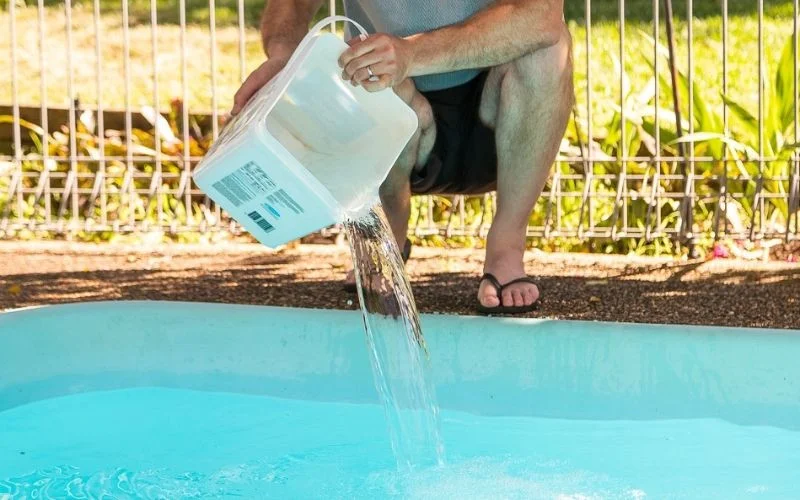
Muriatic acid is an effective algaecide
Clarifiers and Flocculants
Clarifiers and flocculants are chemical compounds used to remove suspended particles and improve water clarity in pools. These chemicals for pools work by causing small particles to clump together, forming larger particles that can be easily filtered out or vacuumed from the pool.
Poly Aluminum Chloride (PAC)
Poly Aluminum Chloride (PAC) is a highly effective flocculant chemicals for pools. It causes suspended particles, such as dirt, algae, and organic matter, to coagulate and settle at the bottom of the pool, making it easier to remove them through vacuuming or filtration. The recommended dosage for PAC is typically 2 kilograms per 100 cubic meters of water.
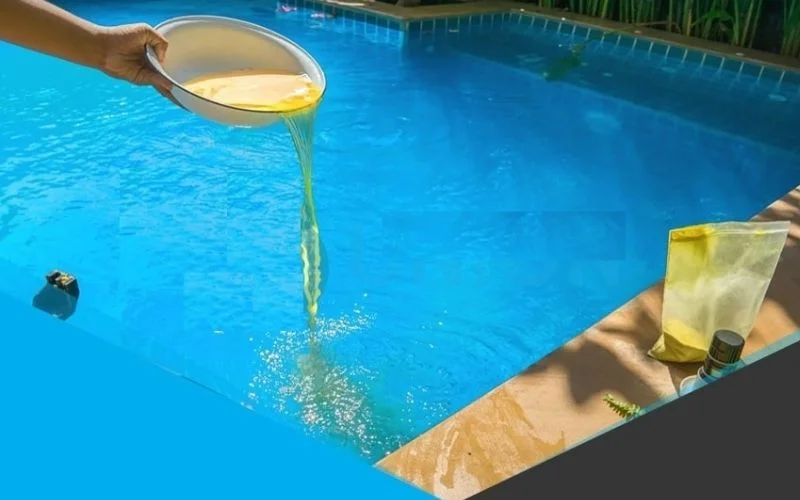
PAC is a highly effective flocculant chemicals for pools
Polymer Cation
Polymer Cation is another flocculant used in pools to remove suspended solids and clarify the water. It works by causing particles to agglomerate and sink to the bottom of the pool, where they can be easily removed. Polymer Cation is particularly useful for pools with high levels of suspended solids, such as dirt or clay particles.
Algaecides and Oxidizers
Algae growth is a common issue in pools, especially during warm weather conditions. To combat this problem, pool owners often rely on algaecides and oxidizers, which help prevent and eliminate algae blooms.
Ozone Generators
Ozone generators are increasingly popular in pool sanitization systems. These devices generate ozone gas, which is a powerful oxidizer that effectively kills bacteria, viruses, and algae in the pool water. Ozone generators are often used in combination with other pool chemicals, such as chlorine, to enhance disinfection and water quality.
Essential Safety Tips for Pool Chemicals
When working with chemicals for pools, it's essential to follow proper safety protocols and best practices to ensure the protection of both the pool users and the environment.
- Read and follow the manufacturer's instructions carefully, including dosage recommendations and safety precautions.
- Always wear appropriate personal protective equipment (PPE), such as goggles, gloves, and respiratory protection, when handling pool chemicals.
- Store chemicals for pools in a cool, dry, and well-ventilated area, away from direct sunlight and heat sources.
- Never mix different pool chemicals together, as this can lead to dangerous chemical reactions.
- Ensure proper ventilation when adding chemicals to the pool water to avoid inhaling fumes.
- Dispose of any unused or expired pool chemicals according to local regulations and guidelines.
By following these guidelines and using the right chemicals for pools, you can maintain a clean, safe, and enjoyable swimming environment for you and your family or guests.
In conclusion, the proper use of chemicals is essential for effective pool maintenance. By understanding the different types of chemicals for pools, their functions, and proper usage, you can ensure a clean, safe, and inviting swimming experience. Always prioritize safety when handling these chemicals and consider consulting with a professional pool service provider if you have any concerns or questions.
Related Articles
Liquid Sodium Hydroxide 32% - 50%
Product Description Product name Liquid sodium hydroxide 32% - 50% Another name Liquid sodium ...
In-Depth Overview of Liquid PAC 10% - 17%
Liquid PAC 10% - 17% is currently available in many places on the market as it is a chemical with ...
Is Chlorine in Water Harmful?
Using chlorine in water to disinfect has helped purify the water and reduce the risk of waterborne ...
Chlorine Granules vs Chlorine Tablets: Which is Better for Treating Water?
When it comes to treating water for swimming pools, industrial processes, or household uses, ...
Chlorine vs. Bromine: Which Sanitizer is Best for Your Pool?
Chlorine has long been the go-to sanitizer for pools and spas, but have you heard of its ...
Everything You Need to Know About Chlorine Granules for Pool Sanitation
When it comes to maintaining a clean and hygienic swimming pool, chlorine granules , commonly known ...


